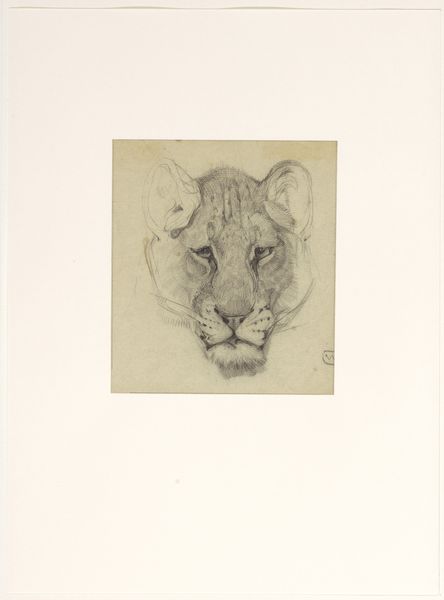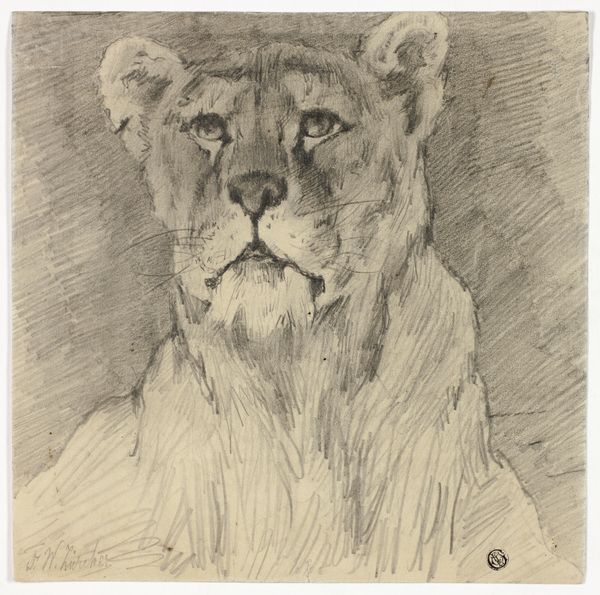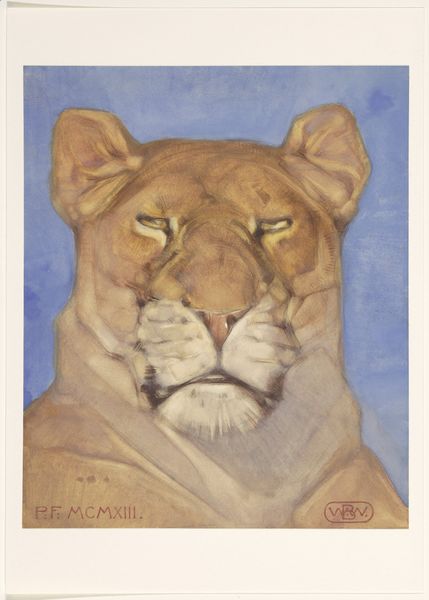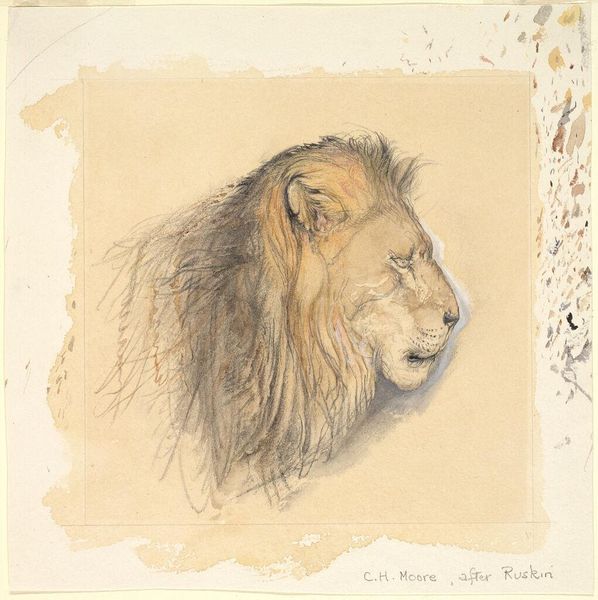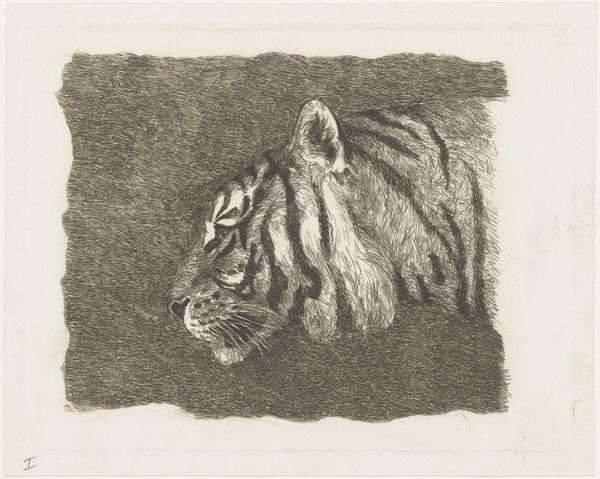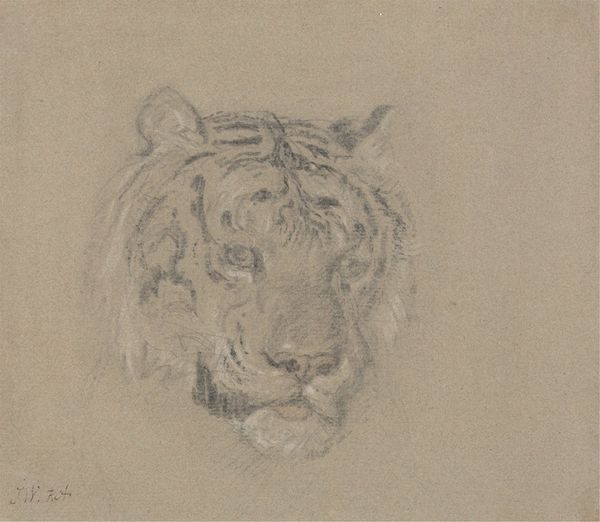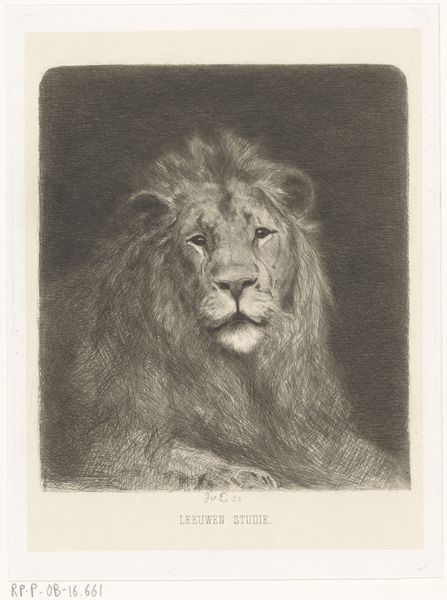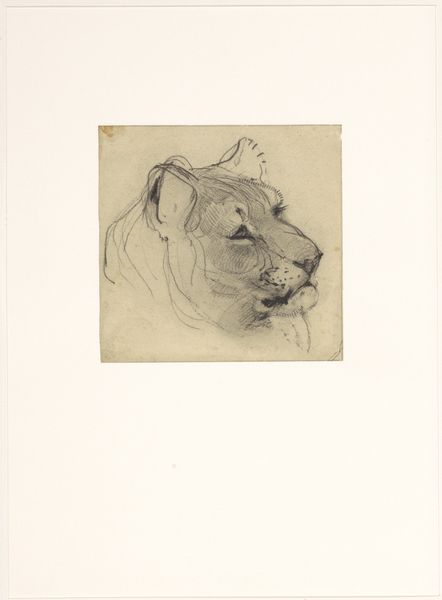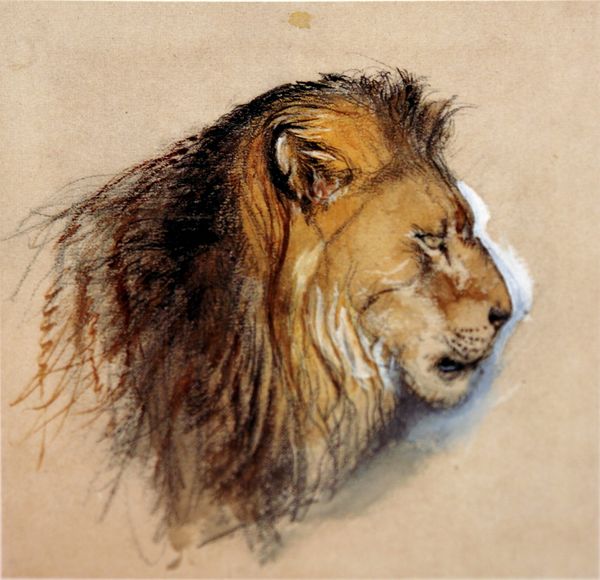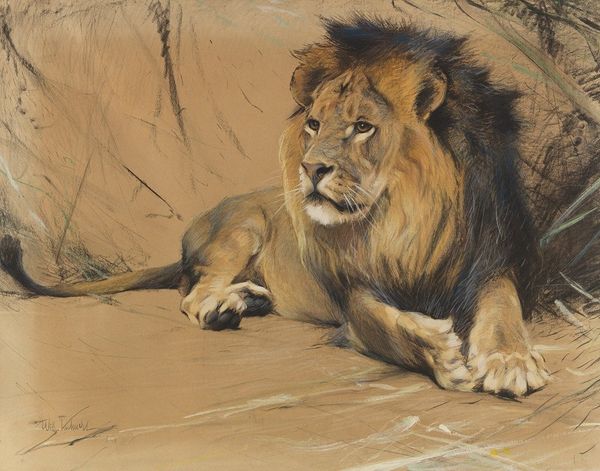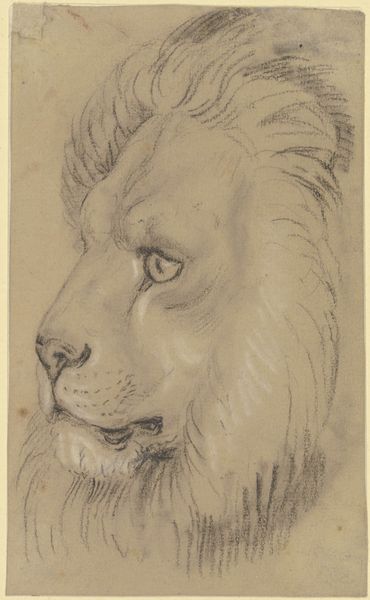
drawing, pencil
#
portrait
#
drawing
#
landscape
#
pencil drawing
#
pencil
#
portrait drawing
#
watercolour illustration
#
realism
Dimensions: height 323 mm, width 269 mm
Copyright: Rijks Museum: Open Domain
Editor: This drawing, "Kop leeuwin" – or "Head of a Lioness" – created between 1866 and 1939 by Bernard Willem Wierink, uses pencil to capture its subject. I'm struck by the lioness's intense gaze; there’s such a palpable sense of power. What do you see in this piece, beyond just the realistic depiction? Curator: That gaze is definitely key. It invites us to consider the representation of power and femininity. Traditionally, lion imagery is associated with masculine strength and dominance, but here, Wierink gives us a female lion, demanding we rethink that symbolism. How does her expression challenge stereotypical gender roles? Editor: That’s interesting, I hadn’t thought about it that way. Perhaps her slightly downturned mouth suggests a weariness, like the weight of those expectations. Is it possible the artist was commenting on the burden placed on women in society? Curator: Absolutely. Given the time period in which Wierink was active, we can analyze this piece through the lens of evolving social expectations for women. Consider also the exoticism associated with wild animals. The lioness might represent the ‘untamed’ woman, resisting domestication. What does realism as an artistic style contribute to this discourse? Editor: The realism almost makes her a direct confrontation; her gaze is unwavering, as if challenging us to look away from an uncomfortable truth. It feels much more pointed than if it was an allegorical portrayal. Curator: Exactly. It’s about challenging viewers to confront their preconceived notions and question the power dynamics at play within society and art itself. I am especially curious as to why the artist chose to render this portrait specifically as a pencil drawing. It opens so many questions. Editor: I never would have thought to read so much into a simple animal portrait, but framing it this way makes it so much more complex and meaningful. Thanks for opening my eyes. Curator: It's these multilayered interpretations that keep art history relevant! Hopefully, this will make people consider how even the simplest image can reflect cultural shifts and ongoing struggles.
Comments
No comments
Be the first to comment and join the conversation on the ultimate creative platform.
